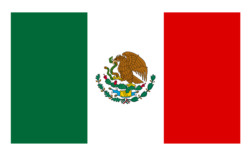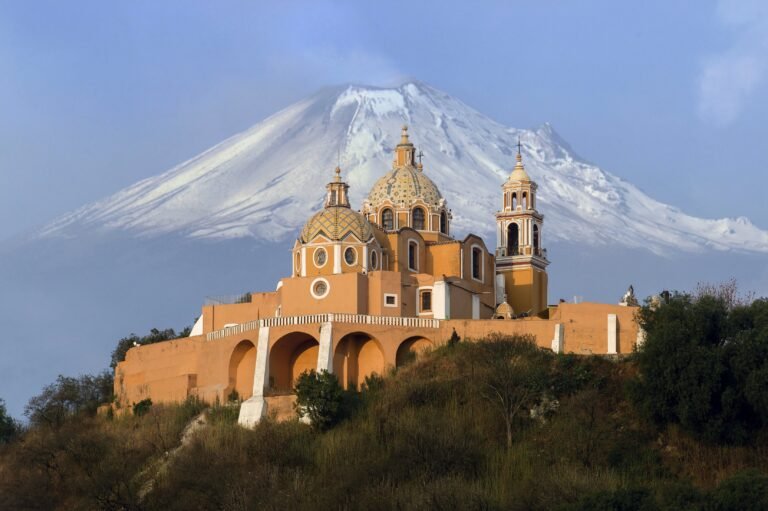Why Does Mexico Have Green On Their Flag?
Mexico’s flag is a vibrant symbol that proudly showcases the country’s rich history and culture. Delving into the significance behind the green hue on the Mexican flag reveals a fascinating tale of national pride and historical roots. By exploring the reasons behind this choice of color, we can gain a deeper understanding of Mexico’s identity and the values it holds dear. From the flag’s origins to its profound symbolism, this article will unveil the story behind why Mexico has green on their flag.
The Symbolism of Mexico’s Flag
The National Emblem
Mexico’s flag is a powerful symbol of the nation’s history, culture, and values. The flag is known for its distinctive tricolor design, consisting of three vertical stripes – green, white, and red – in equal proportions. In the middle of the white stripe, there is a national emblem, also known as the Mexican coat of arms, which adds further symbolism to the flag. The emblem features an eagle perched atop a cactus, holding a snake in its beak, and surrounded by a wreath of oak and laurel leaves. This iconic emblem is deeply rooted in Mexican history and represents the fusion of indigenous and European influences that shape the country’s identity.
The Colors of the Flag
The vibrant colors of the Mexican flag hold significant meaning. Each shade represents different aspects of Mexican culture, heritage, and values. Green, white, and red are the primary colors used in the flag.
The Symbolism of Green
Among the three colors of the Mexican flag, green holds special symbolism. It represents the lush and fertile landscapes of Mexico, as well as the ideals of hope and independence.
Connection to Mexican Independence
The color green is closely tied to Mexico’s struggle for independence. During the early 19th century, Mexico fought for liberation against Spanish colonial rule. The green symbolized the need for Mexicans to cultivate and nurture their country’s resources as they sought independence and self-reliance. It was a reminder of their commitment to build a strong and prosperous nation.
Representation of Hope and Independence
Green, in the context of the Mexican flag, also reflects the spirit of hope and determination that characterized the drive for independence. It serves as a constant reminder to the people of Mexico that their aspirations for a brighter future and the pursuit of liberty should remain steadfast.
Historical Significance
Understanding the historical context behind the Mexican flag is essential to grasp its significance fully. The flag’s origin can be traced back to influences from the Aztec civilization and the Mexican War of Independence.
The Aztec Influence
The Aztecs, an indigenous civilization that thrived in Mexico before the arrival of Europeans, used symbols extensively and attached great importance to colors. Green was associated with the god Quetzalcoatl, who represented life, fertility, and abundance. The use of green in the flag reflects the influence of the Aztec civilization on Mexico’s cultural heritage and the desire to preserve and honor this connection.
The Mexican War of Independence
The Mexican War of Independence, which lasted from 1810 to 1821, was a pivotal event in shaping Mexico’s identity and autonomy. The struggle to break free from Spanish rule brought together people from diverse backgrounds, united by their shared desire for liberation. The current design of the Mexican flag emerged during this period, and its colors soon became symbols of the fight for independence.
Timeline of the Mexican Flag
The Mexican flag has evolved over time, reflecting the nation’s changing political landscape and evolving sense of national identity.
Early Mexican Flags
Before the adoption of the current design, Mexico went through several variations of the national flag. Initially, the flag displayed a simple green background, symbolizing the nation’s hope and aspirations. Subsequent versions incorporated different elements, such as the depiction of eagles, revolutionary slogans, and the faces of national heroes.
Adoption of the Current Design
The modern Mexican flag, featuring the tricolor design and the national emblem, was officially adopted on September 16, 1968. This date holds historical significance as it marks Mexico’s independence day, commemorating the beginning of its struggle for freedom from Spanish colonial rule.
Similarities with Other Flags
While every flag carries its own unique symbolism, certain similarities can be found between the Mexican flag and those of other nations.
The Green in the Italian Flag
The green used in the Mexican flag has often been associated with the Italian flag due to the similarities in color and positioning. However, it is important to note that the shade of green used in the Italian flag is slightly darker and represents different values. In Italy, green symbolizes hope, freedom, and the nation’s connection to the land and agriculture.
The Green in the Nigerian Flag
In Nigeria, the color green holds similar significance to that in the Mexican flag. The two countries share a connection through the green color, as it represents their agricultural heritage and the lush vegetation found within their borders. Both flags use green to symbolize hope, fertility, and the potential for growth and prosperity.

Cultural Significance of Green
Green is a color deeply ingrained in Mexican culture, carrying meaning beyond its representation in the flag.
Green in Mexican Culture and Nature
Mexico is blessed with stunning green landscapes, from its dense rainforests to its sprawling agricultural fields. The country’s diverse flora and fauna contribute to a vibrant tapestry of green hues that inspire a sense of pride and admiration among its people. Green is also associated with the fertile land and the cultivation of crops, representing Mexico’s rich agricultural heritage.
Symbolism of Green in Pre-Hispanic Cultures
Long before the arrival of Europeans, green held significant meaning in the rituals and art of pre-Hispanic cultures. The color represented life, growth, and the renewal of nature. Green was often associated with Quetzalcoatl, the feathered serpent god, who was revered for his connections to fertility, agriculture, and natural balance.
The Importance of National Symbols
National flags, such as the Mexican flag, serve as powerful unifying symbols for a country and its people.
Unity and Patriotism
The Mexican flag fosters a sense of unity and pride among its citizens, reminding them of their shared heritage and the values they hold dear. It serves as a unifying force, bringing people from diverse backgrounds together under a common emblem. The flag is often displayed during national celebrations, sporting events, and moments of national importance, serving as a testament to the shared love for Mexico.
Historical and Cultural Identity
The Mexican flag represents the historical struggles, triumphs, and aspirations of the nation. It serves as a visual representation of Mexico’s cultural heritage and the spirit of independence that shapes its identity. By honoring the flag, Mexicans pay tribute to their ancestors and the sacrifices made to secure a better future.
Mexican Flag Etiquette
Respecting the flag and adhering to proper flag etiquette is crucial to preserving its dignity and symbolism.
Proper Use and Display of the Flag
Mexicans hold their flag in high regard and follow specific guidelines when it comes to its display. The flag should always be treated with respect and never used for inappropriate purposes or as a form of decoration. When displayed vertically, the green stripe should always be positioned to the left of the viewer. It is also important to handle the flag with care, ensuring it is not damaged or soiled.
Flag-related Celebrations and Procedures
Various celebrations and ceremonies in Mexico revolve around the flag, honoring its symbolism and significance. One such example is the annual Flag Day celebration on February 24th, where schools, government buildings, and public spaces raise the flag to commemorate its adoption. Additionally, during the hoisting and lowering of the flag, accompanied by the national anthem, proper protocols and procedures are followed to demonstrate respect and reverence.
The Evolution of the Mexican Flag
Over time, the Mexican flag has undergone minor modifications and sparked debates regarding its design.
Minor Modifications over Time
Since its adoption in 1968, the current design of the Mexican flag has remained largely unchanged. However, minor adjustments have been made to ensure accurate representation and proportionality. These modifications include slight alterations to the position and size of the national emblem, but the overall symbolism and color scheme have remained constant.
Controversies and Proposed Changes
Just like any national symbol, the Mexican flag has faced controversies and calls for modification. Some discussions have focused on issues such as the representation of indigenous cultures, gender equality, and the inclusion of additional symbols to better reflect the country’s diversity. However, any proposed changes to the design must be approached with caution, considering the flag’s deep-rooted historical and cultural significance.
Conclusion
The Mexican flag stands as a testament to the rich history, cultural heritage, and national pride of Mexico. From its origins in the Aztec civilization to its role in the struggle for independence, the flag embodies the spirit of the Mexican people. The colors and symbols it bears reflect the values of hope, unity, and independence that have shaped Mexico’s identity. As Mexicans proudly display their flag, they honor their past and embrace a future filled with enduring symbolism and national pride.











